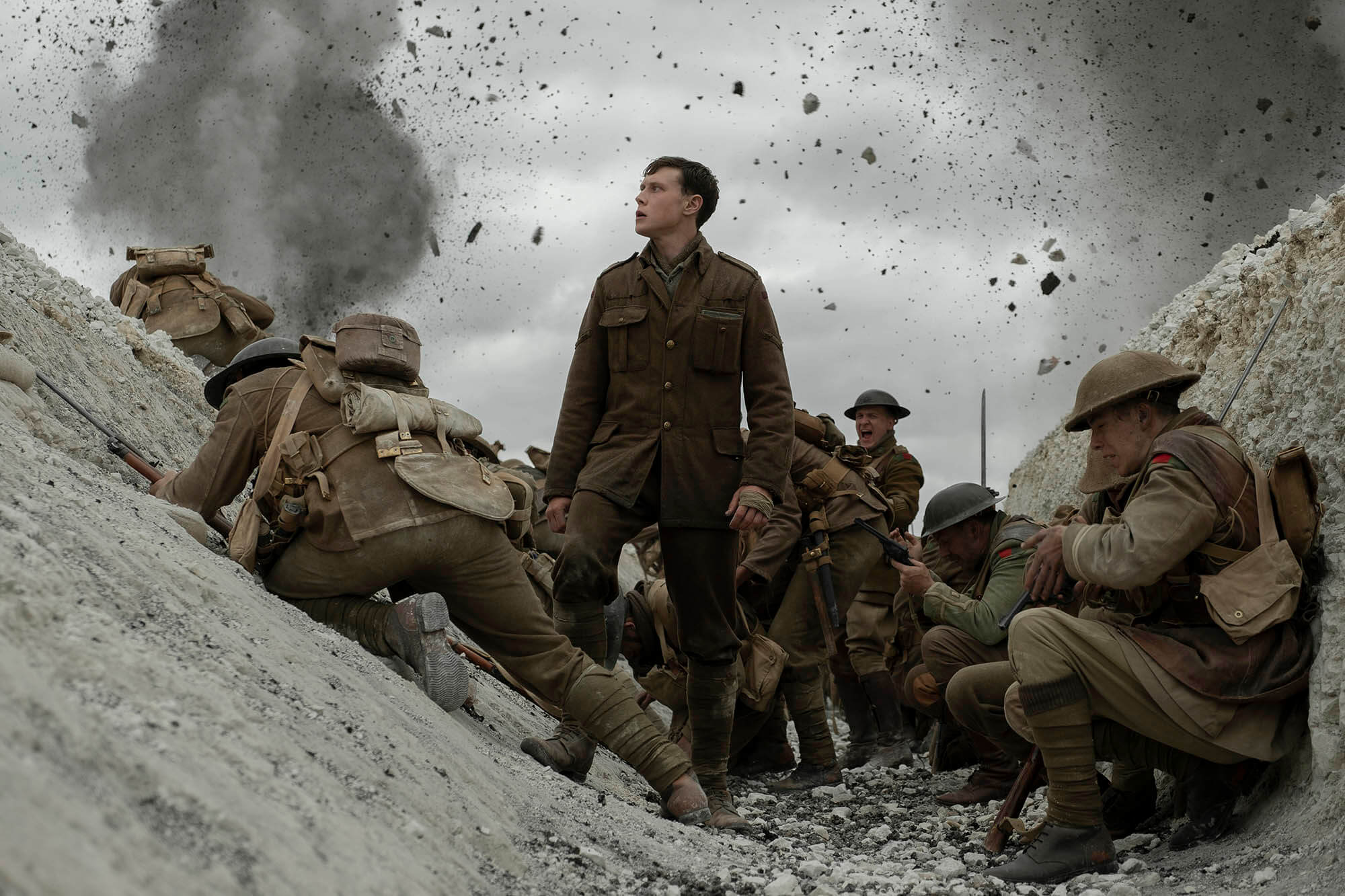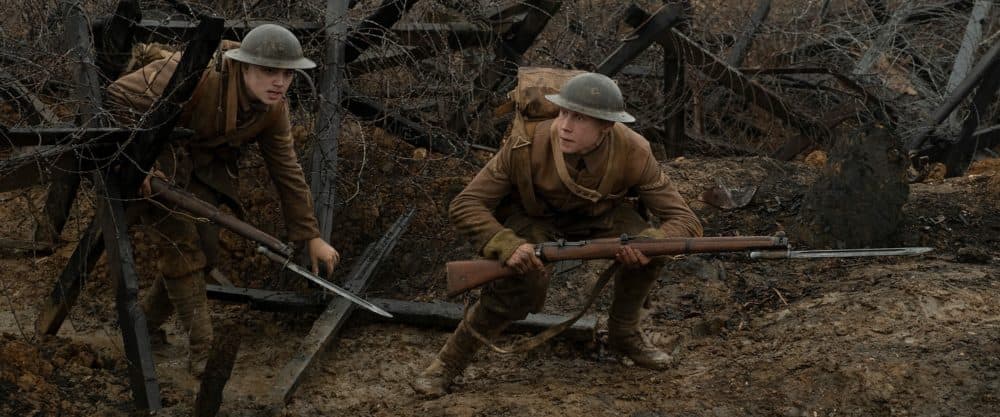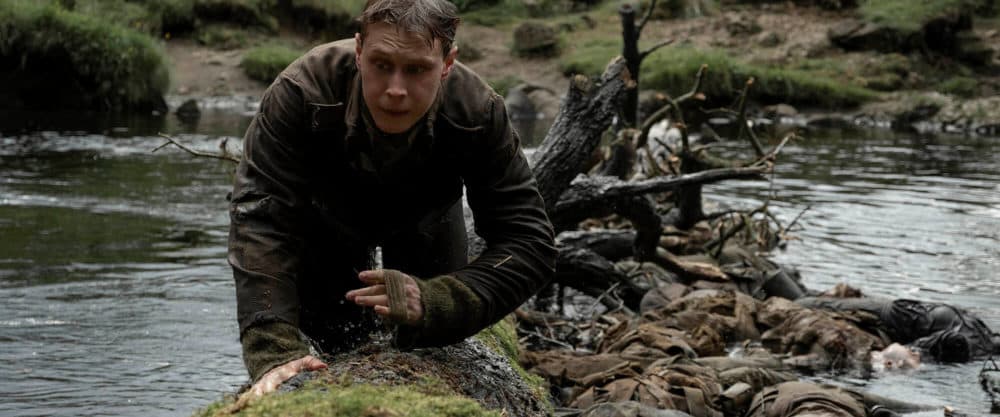Advertisement
Review
WWI Battlefield Adventure '1917' Mastered The Unbroken Shot — But Not Much Else

One of the most important lessons I learned in film school came during the first week of a class called “Directing the Camera.” We’d been provided with an interrogation scene from a recent thriller and told to restage it ourselves. A trio of swaggering hotshots strapped their cinematographer to a wheelchair and filmed their contribution as a dazzling single take during which the camera zipped and zagged in circles and figure-eights around the performers. It was a complicated, extremely difficult shot that earned applause from some members of the class. But the students failed the assignment because they were unable to answer the only question posed by our wily professor: “Why did you shoot it that way?”
See, the kids hadn’t engaged with the material at all. No thought was given as to how the story would be most effectively presented, rather they were worried about impressing their instructor and knocking the socks off their new classmates, no matter that all this visual razzle-dazzle distracted from the dialogue and ran counter to the purpose of the scene they were shooting in the first place.
I thought about those students a lot while being bored out of my mind by the preening virtuosity of “1917,” an exhausting technical exercise in which director Sam Mendes and cinematographer Roger Deakins have meticulously arranged a sprawling WWI battlefield adventure that spans 24 hours and dozens of miles with hundreds of extras and explosions to look like a single, unbroken shot. It’s an astonishing feat of planning, logistics and digital trickery that I’m sure will make for marvelous behind the scenes featurettes on the upcoming Blu-ray special edition and is one of the most enervating experiences I had in a movie theater last year.

“1917” tells the slim story of British infantrymen Blake (Dean-Charles Chapman) and Schofield (George MacKay), tasked with the dangerous mission of delivering a crucial message on foot through no man’s land to inform a battalion — one that includes Blake’s beloved brother, for extra dramatic emphasis — that they’re about to march into a trap. Hundreds will be killed if our boys don’t get there in time, so the camera sticks close to these scampering soldiers as they breathlessly make their way through a variety of hostile environments and bad-luck scenarios. That’s pretty much all there is to it, at least as far as story and character go.
The rest of it is running and gawking at how many impossible-looking shots Mendes and Deakins can conjure within their digitally augmented landscapes. An airplane plummets from the sky and crashes a few feet from our characters, who later take tumbles down waterfalls and dodge sniper fire by the light of a burning French village. It’s all a lot of admittedly eye-popping spectacle that has a vaguely elastic, artificial vibe and remains stubbornly divorced from any semblance of human drama. The way the camera hovers at a slight remove behind our protagonists makes them resemble avatars in a WWI video game you’re stuck watching someone else play.
“1917” suffers particularly in proximity to last year’s extraordinary documentary “They Shall Not Grow Old,” for which Peter Jackson restored, colorized and created harrowing soundscapes for actual WWI footage from the Imperial War Museum archive. There’s nothing in Mendes and Deakins’ overlong tech demo that comes close to the grit and disgusting muck of the real deal, and one can’t help but notice how fussily this film has been finessed to downplay the constant carnage, horrifying hygiene and anything else audiences might find actually upsetting in a movie about war.
Faking a whole film as a single shot isn’t exactly a novel idea. Alfred Hitchcock did it in his 1948 “Rope” and the baffling Best Picture winner “Birdman” from a few years back pulled the same stunt for reasons that continue to escape me. Director Alfonso Cuarón and cinematographer Emmanuel Lubezki’s 2006 masterpiece “Children of Men” is probably to blame for the long-take craze of recent years, pioneering the invisible stitching of separate shots into fluid movements for its breathtaking battle sequences. Ever since then there’s been a sort of “my tracking shot is longer than yours” measuring contest going on with stuff like the Dunkirk scene in Joe Wright’s “Atonement” or any given moment of “The Revenant.”

Mendes dipped his toe in this already with the pre-credit sequence of his dire 007 picture “Spectre,” and it’s probably worth pointing out that directors like Martin Scorsese, Steven Spielberg and Paul Thomas Anderson, who were once renowned for their epic, impeccably choreographed Steadicam shots have largely steered clear of the practice now that they’re much easier to pull off and have become something of a fad. (Scorsese even slyly parodies his own with the wobbly opening nursing home shot of “The Irishman.”)
With only one obviously visible cut to black after a character is knocked unconscious — a sneaky way for Mendes and Deakins to fudge the timeline and jump ahead a few hours — “1917” suffers from logy pacing and awkward patches of dead air. It turns out that editing is important — it’s a crucial tool used for shaping scenes to give them direction and internal rhythm, or just to skip over some of the boring stuff while your protagonists are walking around a giant puddle.
The decision to keep the camera tethered tight to Blake and Schofield’s perspectives at all times denies us the vantages of wide shots and the intimacy of close-ups. Despite the abundant extras and pyrotechnics, these limitations of the central gimmick make “1917” a visually monotonous experience. It’s cinema as a VR headset, where all the expressive qualities of the art — images staged to convey ideas and juxtaposed for thematic emphasis — have been replaced by a dull literal-mindedness, a quote-unquote immersive trip into unconvincing verisimilitude that makes a lousy substitute for drama.
You don’t spend “1917” thinking much about Blake or Schofield, and I don’t think you’re supposed to spend it thinking about the horrors and sacrifices experienced by soldiers in World War I. The movie is transparently designed for you to spend two hours gaping in awe and marveling at the awesome achievements of Sam Mendes and Roger Deakins. When it was over I wished I could ask them, “Why did you shoot it that way?”
